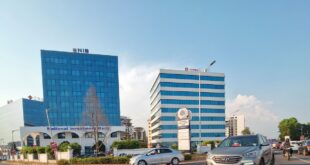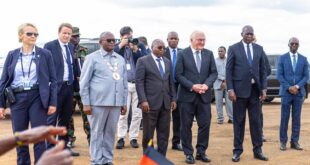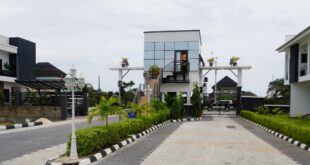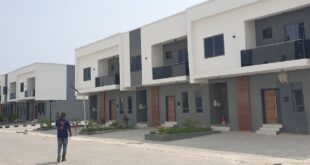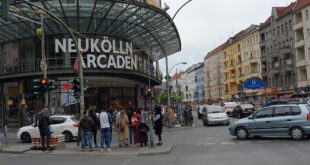As a global trade war rages, Africa fears contagion from lower commodity prices, according to the Institute of Chartered Accountants in England and Wales (ICAEW) latest report, Economic Insight: Africa Q2 2019.
The accountancy body provides GDP growth forecasts for various regions including East Africa, which is the region in Africa that was estimated to have experienced the most rapid real GDP growth in 2018, and is forecast to continue doing so over the next two years, with a projected growth rate of 6.1%.
Behind East Africa is the franc zone as the second-fastest growing region in Africa: there, GDP growth is forecast at 4.9% for 2019. The report, commissioned by ICAEW and produced by partner and forecaster Oxford Economics, underscores the role of economic diversity in weathering the storm of unstable oil and commodity prices.
According to the report, in Africa, the fear is that a slowdown in China will result in softer demand for commodities, and accordingly lower commodity prices. As happened the last time commodity prices fell dramatically, the undiversified economies will come under pressure as current account balances deteriorate, currencies come under strain, prices go up and central banks push up interest rates.
Speaking during the launch of the latest report, Michael Armstrong, ICAEW’s regional director for the Middle East. Asia and Africa, said that the strength of the diversified economies in the east of the continent plays a major role in cushioning them from the shocks of fluctuating commodity prices.
“As it has been since the sharp fall in oil and commodity prices that started in 2014, East Africa is the region in Africa that is estimated to have experienced the most rapid real GDP growth in 2018, and it is forecast to continue doing so over the next two years,” said Mr Armstrong.
“The region’s growth is mainly driven by strong performances in the two major economies: Kenya, a $90bn economy forecast to expand by 5.5% in 2019, and Ethiopia, an $80bn economy forecast to grow by 7.9%. Kenya, in particular, has a dynamic banking sector and its most successful banks are regional leaders,” he added.
The franc zone’s GDP growth is forecast at 4.9% for 2019. Most of the growth will take place in Ivory Coast, which is forecast to show real GDP growth of 7.0% this year thanks in large part to services growth (although cocoa exports are still crucial).
North Africa presents a somewhat mixed bag: Egypt, Morocco and Tunisia have diversified economies, whereas Algeria and Libya are extremely dependent on oil and gas. The latter two are forecast to have a very disappointing year in 2019: Libya’s economy will contract by 4.1%, and Algeria’s will grow by only 2.0%. This contrasts with a growth rate of 5.5% in Egypt, where government has been exemplary in implementing constructive economic policy. However, to sustain this kind of growth into the future the government will have to encourage private-sector growth and improve the corporate sector’s access to finance.
Southern Africa is the slowest-growing region on the continent, with GDP growth forecast at barely 1.8% this year: less than a third of East Africa’s growth rate. Growth in the south is dragged down by South Africa, the region’s dominant economy (it accounts for more than two-thirds of regional output), where growth is forecast to remain at a dismal 0.8% in 2019 – the same level as in 2018. Slow growth in Angola (+1.1% in 2019, after a 2.5% contraction in 2018), the region’s second-biggest economy, acts as a further brake on the region’s growth.
© African Media Agency
The full Economic Insight: Africa report can be found here
 THE AFRICAN COURIER. Reporting Africa and its Diaspora! The African Courier is an international magazine published in Germany to report on Africa and the Diaspora African experience. The first issue of the bimonthly magazine appeared on the newsstands on 15 February 1998. The African Courier is a communication forum for European-African political, economic and cultural exchanges, and a voice for Africa in Europe.
THE AFRICAN COURIER. Reporting Africa and its Diaspora! The African Courier is an international magazine published in Germany to report on Africa and the Diaspora African experience. The first issue of the bimonthly magazine appeared on the newsstands on 15 February 1998. The African Courier is a communication forum for European-African political, economic and cultural exchanges, and a voice for Africa in Europe.





